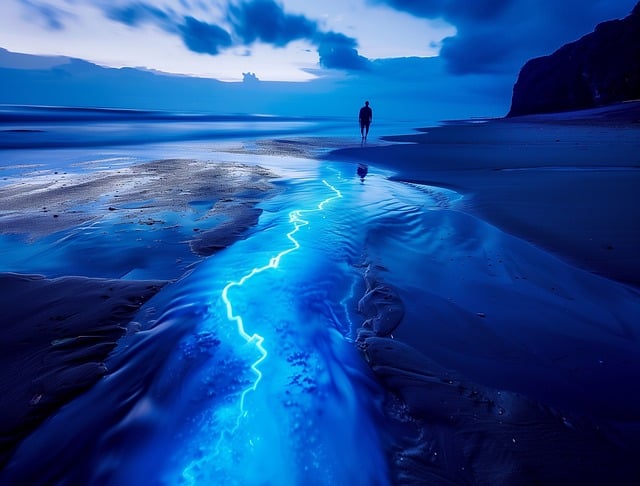The Maldives, known for its crystal-clear waters, white sandy beaches, and luxurious resorts, offers a magical phenomenon that few other places in the world can match – bioluminescent beaches. This natural wonder, where the ocean glows with a mysterious blue light, creates an unforgettable experience. Here’s everything you need to know about visiting the bioluminescent beaches in the Maldives.
1. Understanding Bioluminescence
Bioluminescence is a natural phenomenon where certain organisms produce light through chemical reactions within their bodies. In the Maldives, this mesmerizing glow is often caused by tiny marine plankton called dinoflagellates. When these microorganisms are disturbed by waves or movements in the water, they emit a bright blue light, creating a sparkling effect on the ocean’s surface. This spectacle is best viewed in the dark, making nighttime the perfect time for this magical experience.
2. Best Time to Visit
The bioluminescent phenomenon can be seen year-round in the Maldives, but the visibility and intensity of the glow can vary. The best time to witness this natural light show is during the dry season, from November to April when the waters are calmer and clearer. Moonless nights provide the darkest conditions, enhancing the visibility of the bioluminescent glow. Plan your visit accordingly combined with offers at this time offered by some of the best vacation hotels such as the famous Avani Hotels & Resorts to maximize your chances of experiencing this magical sight.

3. Top Locations for Bioluminescent Beaches
Several beaches across the Maldives offer the chance to see bioluminescence. Vaadhoo Island is one of the most famous spots, often featured in photographs and travel documentaries. Other locations include Mudhdhoo Island (also known as Vaadhoo Beach) and Rangali Island. Each of these places offers a unique and enchanting experience, allowing you to marvel at the natural light shown in different settings.
4. How to Experience Bioluminescence
To fully appreciate the bioluminescent beaches, it’s best to visit with minimal artificial light around. Many resorts and tour operators offer nighttime excursions specifically to witness this phenomenon. Walking along the shore, wading into the shallow waters, or even kayaking can disturb the plankton enough to create a glowing trail in the water. Be sure to move gently and avoid using flashlights or bright lights, as these can diminish the bioluminescent effect.
5. Capturing the Moment
Photographing bioluminescence can be challenging but rewarding. Use a tripod to keep your camera steady and opt for long exposure settings to capture the glow. Set your camera to a high ISO and a low aperture to allow more light into the lens. Patience and practice are key, as the bioluminescent glow can be fleeting and difficult to capture on camera. However, the effort is well worth it for the stunning images you’ll take home.









